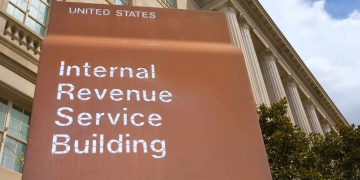If you’re receiving disability benefits (SSDI), you’re probably interested in knowing when your money arrives each month. The Social Security Administration (SSA) has had a system in place since 1997 that distributes payments over three Wednesdays. For July 2025, the key dates are:
If your birthday falls between the 1st and the 10th, you’ve already got paid on Wednesday, July 9th. Were you born between the 11th and the 20th? Your payment will arrive on Wednesday the 16th. And if your birthday is between the 21st and the 31st, it’s due on Wednesday the 23rd.
And there’s a group that gets paid earlier: those who started before May 1997 or who combine SSDI with SSI (Supplementary Assistance) already got paid on July 3rd. So, for example, if your birthday is on the 15th, mark July 16th on your calendar to see the deposit.
How much is coming in on average this year for SSDI?
The typical amount for someone on SSDI is around $1,580 per month in 2025, as legal experts and specialized sources point out. This is an important figure; it reflects what most people receive due to their disability and previous contributions.
To put it in perspective, retirees are receiving an average of $2,002 per month, which is significantly more. But of course, these are different programs with different rules. While the maximum SSDI benefits is set at $4,018, the cap payment for retirees is $5,108.
Goodbye to paper checks: What you need to do NOW
Are you still receiving a physical check in the mail? Listen, this is on its last legs. The federal government has made a dramatic change: a presidential mandate in March 2025 mandates eliminating all paper checks for federal payments. The deadline is September 30, 2025.
This covers everything: SSDI, SSI, retirement, tax refunds, vendor payments—just about any transaction with the government will be affected. Yes, there are some very limited exceptions, such as for people without banking access or emergencies, but these are specific cases that require specific processing.
Why such a drastic change? There are good reasons. First, security: physical checks are much more vulnerable—an estimated 16 times more likely to be lost or stolen than direct deposit! Second, cost: maintaining the check system costs the public treasury a whopping nearly $750 million each year. Eliminating them is a huge savings. And third, efficiency: electronic payments are faster and more reliable for everyone.
Half a million Americans to face paper checks elimination
But how many people are still using checks? Incredibly, by June 2025, nearly 485,000 beneficiaries, many of them elderly or without easy access to banks, still relied on paper checks. The risk for them is real: if they don’t adapt by September 30, they could face serious delays in their payments, withholdings, or even a complete interruption of their benefits. Nobody wants to go through that.
So, what do you need to do to avoid problems is act quickly. The primary and safest solution is to switch to direct deposit into a bank account. It’s the most common and reliable method. If you don’t have a traditional bank account, don’t stress; there are alternatives.
You can use the Direct Express card, a prepaid debit card specifically designed to receive federal payments without a standard bank account. It’s a valid and secure option.
Registration is easier than you think. You can do it online through the Social Security website (SSA.gov), by phone by calling the SSA, by mailing a form, or by visiting your local Social Security office. If you opt for the Direct Express card or need information for people without a bank account, the official site is GoDirect.gov, managed by the Department of the Treasury. Everything is designed to make the transition easier.
Who qualifies for an exception to keep receiving paper checks?
For example, if you live in a remote, unbanked area or have a documented emergency, you can request an exemption. But be careful: this isn’t automatic. You must formally apply to the Department of the Treasury and the SSA, submitting documentation to support your case. Don’t wait until the last minute to research this process if you think it applies to you.
The key message is; don’t wait. September is just around the corner. If you’re left waiting for your paper check after September 30th, chances are that payment simply won’t arrive, or will be held until you update your payment method. Imagine the stress of depending on that money and having it not show up.
Signing up for direct deposit or a prepaid card now ensures your money arrives on time, securely, and without any hassles month after month.




